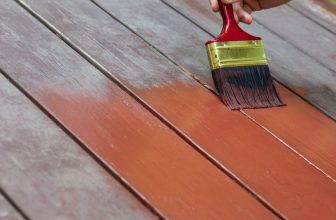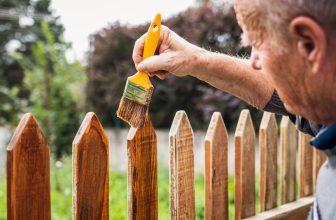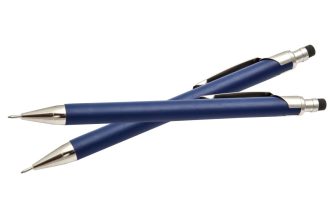Contents
Sanding is often a woodworker’s least enjoyable part of a project, and it can be a particularly daunting task when it comes to finishing furniture. Large furniture pieces often require extensive but precise sanding, and an inadequate tool can make the job take significantly longer.
We tested many different sanders for their ability to make sanding furniture a bit less tedious. We put together these reviews along with a purchasing guide to help you choose the product best suited for your needs.
Best Sanders for Furniture – Our Top Picks
BuildEazy.com may earn a commission if you purchase a product through one of our links.
WEN specializes in affordable, entry-level tools. This palm sander is very inexpensive but is still powerful enough to get the job done.
It’s small and weighs in at just 2.5 pounds, so it’s easy to move around your workpiece. You’ll be able to maneuver around furniture legs or in small nooks without much trouble.
It’s a corded sander, so you’ll have to be connected to a power source at all times. You won’t need to worry about recharging batteries, but you’ll have to manage the cable while you work to keep it out of the way.
It has a 1-amp motor that can move the sanding pad at 13,500 oscillations per minute (OPM), making it capable of taking off quite a bit of material if you need heavy sanding.
It has a pointed tip that allows for detail work on smaller pieces of furniture or corners.
It has a port for dust collection but doesn’t include a collection bag. As such, you’ll either need to purchase one separately or be prepared for more clean up when you’re done sanding.
The sandpaper that fits this sander can be a bit tricky to find, so you may not be able to find replacement sheets in your local home improvement store. The paper gets attached with velcro, so there’s a chance of it detaching during sanding. However, we had no issues with the sheets coming loose.
WORX WX820L 20V Mini Sander
WORX manufactures tools designed for use around the home, so this WORX sander is one of our favorites for working with a wide range of furniture styles and sizes.
The sander is relatively large to sand furniture, so it’s not ideal for getting into cramped spaces or maneuver around chair or table legs. However, it’s one of the best for fast sanding of large surfaces, like tabletops.
It weighs 4.4 pounds, and it can be difficult to use comfortably with one hand. However, it has an adaptable second-hand grip that helps you keep control and apply pressure to your workpiece while you sand.
This is a cordless tool. While you won’t need to worry about a power cord getting in your way, you will need to recharge the battery regularly.
The sanding disc rotates at 14,000 OPM and features several speed settings for efficient use on different furniture materials. The user manual is comprehensive and helps you set your tool for your specific furniture piece.
The sanding disc is round and isn’t the best option for detail work. However, the different attachments lock in securely, so there’s no chance of your sandpaper coming off while you work.
The sander includes a dust collection bag to help minimize clean up and reduce airborne sawdust.
Makita BO4556K 4.5-Inch Finishing Sander
Makita makes tools suitable for professionals and contractors, so this sander is ideal for frequent use and large jobs.
It’s a small palm sander that weighs in at just 2.5 pounds. You can use it with one hand without too much effort, and it’s easy to move in tight areas you may find on your furniture pieces.
This is a corded sander, so you will need an outlet nearby during use. You’ll also have to manage the cord while you sand and make sure it doesn’t get in the way of your work.
It features a potent, 2-amp motor that operates at 14,000 OPM. It’s capable of handling extended use and will likely last through sanding many pieces of furniture. Despite its high power, it’s relatively quiet during use.
The sander feels very durable, and we’re delighted with the quality, especially given the affordable price.
It accepts rectangular sandpaper sheets, giving you a nice blend of detail if you use the corners or heavy sanding on larger surfaces if you use the whole pad. The sheets attach securely, leaving very little chance of detaching during sanding.
Makita includes a large dust collection bag with this sander that does a great job of keeping your workspace clean and tidy.
It also comes with a durable carrying case that makes storage and transportation straightforward.
Makita covers any damage to this product caused by manufacturer defects with their one-year limited warranty, so you can purchase confidently.
Makita BO5041K 5-Inch Random Orbital Sander Kit
This sander from Makita is similar in quality to our previous pick, so it’s considered contractor grade and strong enough to stand up to constant use.
This sander weighs in at 3.09 pounds. It’s average in weight and won’t be too difficult to move around pieces of furniture. It is a bit larger and bulkier than finishing sanders, but it’s ideal for bigger workpieces and heavier sanding applications.
It includes a handle for comfortable, two-hand operation that allows you to put some pressure behind your tool for fast sanding.
It’s a corded tool that you’ll need to keep within range of an outlet. You won’t need to worry about recharging batteries, but you will need to focus on keeping the cord out of your way while you work. However, since this sander is better suited for larger furniture pieces, like tabletops, you shouldn’t struggle too much with cord management.
Makita fitted this sander with an impressive 3-amp motor that moves at 12,000 oscillations per minute. We’re confident the motor will stand up to countless furniture pieces and regular use without getting worn out. It has several speed settings that let you dial in the ideal speed for your working material.
This sander accepts standard, round sanding discs, so you shouldn’t have any problem finding replacement sheets.
The round sanding discs used with this tool don’t allow for much precision on intricate furniture or corners. However, the oscillations are tiny, allowing for fine, smooth sanding for workpieces that will be on display in your home.
It includes a dust collection bag to help keep your working area clear of sawdust.
Makita includes a one-year limited warranty on this sander that covers any damage caused by manufacturing issues.
Bosch GSS20-40 Orbital Finishing Sander
Bosch produces high-power tools designed for heavy and professional use, so you can be sure this sander will last through many projects.
It weighs in at just 2.7 pounds, so you’ll be able to use it with one hand for long sanding sessions without too much of a problem. It’s very small and will allow you to sand hard-to-reach sections of your furniture pieces.
This is a corded sander, so you’ll have to route the cord during use and make sure it doesn’t get in the way of sanding. It does give you the added benefit of not having to charge batteries, but you’ll have to be near an outlet to use this sander.
Bosch fitted this tool with a powerful 2-amp motor that will likely stand up to quite a lot of workshop use and abuse. It can handle extensive sanding of larger pieces of furniture without any issue at all. Despite its high-powered motor and 12,000 OPM rating, this tool is relatively quiet during operation.
The soft grip makes one-handed use comfortable. It reduces vibration through your arm, making longer sanding sessions on larger pieces of furniture more manageable.
This is a finishing sander that accepts rectangular sheets of sandpaper. They allow for fast sanding on larger furniture surfaces as well as detail work with the corner of the pad. The sandpaper remains securely attached, with little chance of coming loose during sanding.
Its collection chamber is one of our favorite features because it uses Bosch’s “Microfilter System.” We found that it captures a large amount of dust from the work surface to keep your shop clean.
BLACK+DECKER BDEMS600 Mouse Detail Sander
BLACK+DECKER focuses on producing budget-friendly tools ideal for casual or infrequent use for homeowners. This is one of the most affordable sanders available.
This is a very small detail sander that you’ll be able to use with just one hand without any trouble at all. It weighs in at only 2.4 pounds, and it will be simple to maneuver around and use on any piece of furniture, from chair legs to the undersides of tables.
It’s a corded sander that will require close proximity to an outlet to use. You’ll never run into dead batteries when you go to begin working, but you’ll have to move a power cord around your furniture while you sand.
It features a 1.2-amp motor capable of 14,000 OPM. It’s less potent than many other options and won’t be able to handle extensive or very frequent use. It’s ideal for smaller pieces of furniture or casual use from time to time.
This is one of the most comfortable sanders to use because it features three different grip options. You can adjust your hand position based on the piece you’re sanding and the angle of the furniture surface while you work.
It includes a microfilter dust collection chamber that catches and holds most of the sawdust kicked up during sanding. It helps keep your workspace clean and gives you a clear line of sight to your work surface.
It accepts wedge-shaped sandpaper sheets, which allows you a good deal of precision on smaller pieces of furniture and corners. It also includes a finger attachment for sanding very small spaces, ideal for use on chair backs or between slats.
DEWALT DWE6411K Palm Sander
DEWALT is well-known in the woodworking industry for high-quality, durable tools designed for professional use. This palm sander fits nicely into that category.
It’s a relatively small tool that you’ll be able to fit into small spaces on your furniture pieces. However, it weighs in at 4.2 pounds, so it’s a bit uncomfortable when used for larger furniture or extended periods. It can lead to fatigue in your wrist and hand relatively quickly.
It’s a corded sander that you’ll need to plug into an outlet to use. You will need to make sure the cord doesn’t interrupt your work, but you’ll never have to be concerned that your tool isn’t charged and ready for use.
DEWALT fitted this sander with a powerful, 2.3-amp motor that will power through sanding of just about any piece of furniture for which you plan to use it. We’re confident it will last for countless projects and will have no issue with extended use. It provides sanding at a rapid 14,000 OPM, so it will also help reduce the amount of time you spend sanding.
The grip on this sander is comfortable and keeps the vibrations you feel during use to a minimum.
This sander takes rectangular sheets of sandpaper, which offers the option for detail work with a corner of the sanding pad or fast sanding of large surfaces with the entire pad. The mechanism for attaching sheets holds them securely, so they’re unlikely to come detached while you’re working.
It comes with a dust collection bag, and while it’s not as capable as others that have microfiltering, it does a good job of keeping your workspace clean.
You will get a 3-year limited warranty from DEWALT if you purchase this sander, and they cover damage caused by manufacturing defects for 36 months. This extensive warranty should drive home how reliable this tool is, and you can feel comfortable purchasing it knowing that it’s guaranteed to work properly for longer than the other options.
Buyer’s Guide
Furniture sanders are designed with a specific purpose in mind, and no single sander will be ideal for everyone’s needs. Make sure you pay close attention to the below features that play a significant role in a furniture sander’s applications and capabilities.
Signs That a Surface Needs to be Refinished
First, it’s helpful to know when your furniture can and should be refinished. This will help determine what portions of your pieces need sanding, which can narrow down the type of sander you need.
If your furniture is painted, you may notice chipping or flaking of the paint on some areas, especially those that may come in contact with moisture. This is an indication that these areas need to be sanded and repainted. Repainting before sanding will only lead to additional chipping problems, so you should sand a larger area than is affected before applying paint.
If your furniture is solid wood and has a lacquer, epoxy, or other clear coat on it, it may be time to sand and refinish if sections are discolored or have water rings. Sanding down below the surface damage and reapplying a clear coat will have your piece looking new again.
The materials used to build the furniture and the structural integrity can also help determine if refinishing is ideal. Some budget furniture is made out of medium-density fibreboard (MDF), which generally isn’t sturdy and can’t be refinished. Make sure your furniture is solid wood before you dive into sanding and refinishing. If it’s MDF or plywood, or if the piece lacks structural integrity, you should choose to replace the piece instead of refinishing it.
Check out this video for tips on how to spot what material was used to construct your furniture:
Types of Sanders
There are three main types of sanders that you can use for furniture sanding. Each has a different purpose, so you’ll need to choose the kind that matches your projects.
Mouse or Detail Sander
A mouse sander – also referred to as a detail sander – has a sanding pad shaped like a standard iron. The rear has a wide sanding surface for sanding medium-to-large pieces of furniture, while the front comes to a point for sanding inside corners and in other small areas.
Finishing Sander
A finishing sander usually has a rectangular sanding pad. It’s ideal for flat, easily-accessible surfaces, but you can use the corner of the pad to reach corners as well. It doesn’t come to a point, so it’s not a good option for sanding inside angles less than 90 degrees.
Random Orbital or Palm Sander
A random orbital sander is also called a palm sander, and these are ideal for larger pieces of furniture that aren’t challenging to reach. They have circular pads that can make quick work of sanding large surfaces.
Features
Whichever sander type you choose for your furniture pieces, make sure you consider the below features, which will affect your experience using the tool.
Power
The motor’s capability is often the most important feature in a sander for woodworkers because it has the biggest impact on performance and work time.
Some sanders have heavy-duty motors that can stand up to constant use and the high degree of stress placed on them by sanding. More capable motors will almost always be more expensive, but they may be a better fit for you if you sand furniture often or want a long-lasting tool. Spending the extra money upfront for a 3-amp motor over a 1-amp motor might save you money in the long run if you plan to use it frequently or for large pieces of furniture.
Vibration
All sander motors produce vibrations through the tool that get absorbed by your hand. The constant vibrating during sanding can be very uncomfortable, especially if you’re working on bigger furniture surfaces. Longer tool use with heavy vibration can lead to pain and tingling even after the job is completed.
Some sanders reduce the vibrations that move through your hand by including a soft grip that absorbs some of the movement. The handle material won’t entirely dampen the tool’s vibrating, but it can make the sander far more comfortable to use for long periods with a good grip.
Speed
Most finishing sanders’ maximum speed is around 13,000-14,000 OPM range, which means your sanding surface will oscillate over 10,000 times every minute. This rating is ideal for finishing, as it’s unlikely to leave gouges or visible sanding lines on your finished surface.
Some furniture sanders have variable speeds that allow you to dial in the ideal OPM for the material you’re sanding. This is a handy feature if you plan on using your sander for different materials, like wood, metal, and plastic.
Ergonomics
You may find yourself using your sander on large pieces of furniture or hard-to-reach areas under tables or between chair legs. It isn’t always comfortable to sand, depending on the position, so a little bit of comfort can go a long way for furniture sanders.
Many sanders feature multiple grip options that let you use your tool comfortably in various positions. Grip options are ideal for use on furniture pieces with tight spaces or limited access. Other sanders have two-handed grip options that allow you to apply some pressure to your tool for faster sanding. Multi-handed grips are excellent for reducing the time it takes to sand down large surfaces on your furniture.
Dust Collection
All furniture sanders have dust collection ports, but not all options include a dust collection bag. If you plan to work indoors, want to keep your workspace clean, or want to reduce the chance of breathing in airborne sawdust, you should choose a sander that has sufficient dust collection. Like the Bosch GSS20-40 Orbital Finishing Sander, some sanders have microfilters that remove most sawdust from your workpiece before it gets into the air.
Cordless Vs. Corded
You’ll have to choose between a cordless and a corded sander. Cordless sanders are ideal for fitting into tight spaces or around rounded pieces of your furniture without having to worry about a power cord getting in the way. However, you need to remember to charge your batteries, or you might find yourself having to wait to get to work until your tool is charged.
Corded sanders can be a bit more challenging to work with because you’ll have to maneuver a cable and keep it out of the way of your sander. However, they’re always ready to use and never need to be recharged. They also tend to be a bit cheaper than battery-operated sanders.
Weight
Furniture sanders are relatively light tools, but they can vary quite a bit in their weight. A tool like the WEN 6301 Electric Detailing Palm Sander weighs in at just 2.5 pounds, making it effortless to use one-handed and move around workpieces with ease. Lighter options are great for use on hard-to-reach areas of furniture.
Heavier options tend to be more durable because they include heavier-duty parts. However, a sander that weighs over 4 pounds can be tiring to use for extended periods and may not be suitable for one-handed operation.
Sandpaper for Refinishing
Many random orbital sanders are a standard size and accept round velcro pads from a variety of manufacturers. You’ll likely be able to find standard sanding discs at any home improvement store or online.
On the other hand, mouse sanders are less popular, and you may be limited in your purchasing options for replacement pads.
Frequently Asked Questions
Is It Better To Sand Or Strip furniture?
It is thought that stripping is a lot quicker and easier than sanding. Sanding cuts through stain and the color in the wood, and it does this unevenly, rather than even. It is better to evenly strip the wood than to sand the surface.
But more importantly, sanding wood cuts through stain and patina (the color changes in wood – caused by oxidation and natural light), it does this unevenly.
Sanding removes layers with spinning sanders, but this requires you to even out the whole piece of wood. Once you start cutting through this coloring and patina, you need to sand the entire piece in order to get an even coloring. If you do not, it will look discolored and uneven.
The process of stripping wood tends to be messy and tenuous. For this reason, many people prefer to use a sander on their wood, instead.
Stripping is less work, and it works extremely efficiently. It works even more efficiently if you leave the stripper on the wood for long enough to dissolve through the wood properly.
Most finishes on old wood are lacquer or shellac, and this can be dissolved quickly when using a paint stripper. It will liquefy from the paint stripper, and you will only need to come along and scrape it off, leaving the stripped wood underneath.
Stripping paint is messy, and slightly more difficult than sanding. If you have not done either before, you may have the idea that sanding will be messier due to the loose wood dust, but this can easily be swept up. Stripping paint is messier, and there are more chemicals involved.
Additionally, if the paint is old (fifty years or so), there is a chance that there may be lead inside the paint.
If you used a sander on lead paint, it may cause you some health issues due to breathing in the dust. With stripping, you can strip the lead out as well as any other paint and colors. It will be messy, but it is likely it won’t cause you any health concerns.
Paint remover/stripper is best used for flat surfaces such as walls and furniture. Sander should be used for more detailed work such as woodwork. Stripping is better and more effective to remove paint and imperfections from wood.
Do You Have To Sand Wood Furniture Before Painting?
It is better to sand your furniture before you paint it. Preparing to paint a piece of furniture is simple, and the steps should be followed every time.
You should remove all the removable parts such as drawers and hardware. Use a gentle wood cleaner or grease remover on the wood, and give it a rinse with some clean water. Let it dry, and you’re ready to sand.
It is necessary to sand wood before painting because you can remove any imperfections or bumps. Different kinds of wood respond differently to paint, and how it will adhere to the surface of the furniture.
By sanding the wood, you are removing any dimples or imperfections, and it will ensure that the wood will be smooth and imperfection free.
This will make it easier for the paint to stick to it, and it is less likely to peel off. If you don’t sand it, it may end up peeling, and there may be darker patches and odd bumps and lumps.
What Is The Fastest Way To Sand Furniture?
One of the unspoken rules about sanding is that you should sand with the grain. By sanding with the grain, you will speed up the process, and it will sand off a lot more wood than if you went against the grain.
Additionally, if you are looking at sanders, look at sanders with suction devices. This will collect the dust as you go, and make the whole process a lot faster and easier.
Conclusion
There is no such thing as the perfect furniture sander. Every tool is designed for a specific purpose and type of furniture surface, so you won’t be able to find a sander that excels for all furniture applications.
However, our top pick for performance and adaptability is the WEN 6301 Electric Detailing Palm Sander. The sanding disc comes to a point for detail work and easy sanding inside corners and tight spaces you may find on some furniture pieces. It’s also powerful enough to sand larger planes in a short amount of time, which is ideal for bigger workpieces or sections that need refinishing.














